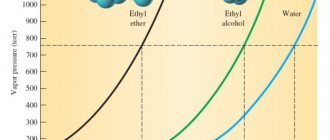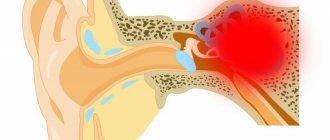The pulse can tell whether a person has any disease and help identify problems with the heart. Anyone can determine the frequency of beats. To do this, it is enough to have basic skills and basic knowledge of counting.
The heart rate in adults must be within certain limits (norms), deviation from which is grounds for visiting a doctor. You cannot diagnose yourself and self-medicate.
Today we will talk about the normal pulse rate in men and what a deviation from these norms indicates.
What should an adult man's pulse be?
Pulse is the number of rhythmic vibrations of the walls of the arteries and vessels of the body associated with the work of the heart muscle to circulate blood in the body over a given period of time. Simply put, this is the number of heart beats in one minute. Determining heart rate (HR) is necessary to monitor the activity of the heart and detect problems in its functioning.
In an adult man, the normal heart rate (HR) is 60-70 beats per minute. General indicators for humans allow a maximum rate of 80 blows.
Main factors influencing heart rate:
- gender of the person (pulse rates in women are higher than in men);
- age (in children the heart rate is higher than in adults);
- height (in a tall person, the heart beats less often);
- physical condition (an athlete’s resting heart rate is lower than that of an ordinary person);
- time of day (heart rate is reduced during night sleep, as well as for an hour before and after it).
Why is the pulse called arterial?
The arterial bed receives the entire volume of blood that is pushed out by the heart chamber at the time of contraction. The periods of systole - an increase in pressure as blood comes out - are accompanied by rhythmic beats. The subsequent stages of relaxation of the myocardium for new filling with blood - diastole, make it possible to determine the frequency and strength of these impulses. The oscillations made by the arterial walls are called the pulse. Damage to these vessels, especially large ones, is the most dangerous, as they are accompanied by massive rapid bleeding.
The stronger the pulse beats, the greater the blood flow through the arteries, the more active the oxygen supply to internal organs and overall metabolism. The main “impact” force is provided by the walls of the left ventricle of the myocardium. The following pulse characteristics are important:
- frequency;
- rhythm;
- speed;
- voltage.
Violation of one or more points indicates acute or chronic pathology. Changes in pulse intervals, for example, are a sign of cardiac arrhythmia. An increase or decrease in speed indicates hypertension or a hypotonic state.
What does the heart rate show in men?
The number of heart beats per minute, as well as their rhythm, indicate the quality of the cardiovascular system in a man. Heart rate indicators and its features enable an experienced doctor to assess the degree of a person’s health, taking into account his age and gender.
The nature of the heart rhythm indicates possible diseases and differs as follows:
- tachycardia (rapid heartbeat - more than 90 beats/min.). This is a symptom of disorders of the ANS, endocrine system, hemodynamics or other forms of arrhythmia;
- bradycardia (slow heartbeat - less than 50 beats/min.). This is a symptom of changes in the myocardium, increased intracranial pressure, lead or nicotine poisoning, hypothyroidism, fasting, cold, or typhoid fever;
- arrhythmia is a violation of the rhythm and frequency of heart contractions. Indicates heart defects, myocarditis, complications after taking medications, abnormalities in electrolyte balance, poisoning. It is often a consequence of heart failure - a disorder of cardiac activity leading to insufficient blood supply to the organs and tissues of the body.
Measurement
Pulse measurement is usually performed at the wrist. It is enough for a person to count the number of pulse waves in 1 minute. To obtain more accurate data, it is recommended to take measurements on both limbs. As a comprehensive examination in a hospital setting, the doctor will first find out the heart rate, then he will count the number of respiratory movements (RR) in 1 minute and determine the type of breathing. The resulting indicator is especially important for assessing the child’s development.
When measuring your pulse, you need to pay attention to its rhythm. The shocks should be of equal strength and at equal intervals of time. If there are no deviations, it is enough to spend 30 seconds on the procedure, and then multiply the result by 2. If a clear disturbance in the heartbeat is detected, it is better to spend at least 1 minute on the measurement and consult a doctor. The specialist will prescribe instrumental examination methods. The main one among them is electrocardiography (ECG). It will allow you to evaluate the electrical activity of the heart and identify the causative factor of arrhythmia. As a supplement, the following tests are prescribed:
- Daily ECG monitoring will allow you to see changes in heart function throughout the day under the influence of various factors.
- A treadmill test is prescribed to assess heart rate under the influence of physical activity.
Due to problems with blood vessels or injuries, it is sometimes necessary to count pulse waves in other arteries. Instead of the wrist, you can palpate the neck. The vibrations will come from the carotid artery.
Where is the best place to measure your pulse?
The most convenient place for measuring the pulse is the wrist, on which the radial artery is located. You need to place your index and middle finger on this artery. You cannot apply other fingers, because it is easy to confuse the pulsations of their vessels with contractions of the artery on the wrist.
There are some objective reasons for high heart rate in men, which can distort the correct indicators characteristic of a particular person. So, you cannot measure your pulse:
- for infectious diseases and high body temperature;
- after active sports and other physical activities;
- when taking medications;
- after bath procedures, visiting a sauna and a hot shower;
- during alcohol intoxication;
- after sexual intercourse;
- after prolonged exposure to high or low temperatures;
- on a full stomach.
Pathological causes
The heart rate can vary in one direction or the other due to pathological changes in the body. We are talking about six main diseases.
- Algorithms for measuring respiratory rate, pulse and blood pressure in children
Hypothyroidism
Hypothyroidism is a deficiency of thyroid hormones and the reverse process is hyperthyroidism with an excess of substances in the bloodstream. Hemodynamic disturbances affect the third reflex zone of the heart.
In the first situation, tachycardia occurs, in the second - a decrease in heart rate per minute. Prolonged course of both conditions is associated with an increased risk of fatal or disabling complications.
Diabetes
Generally destroys organs and systems, right down to the visual analyzer. With endocrine pathology, the heart wears out faster; without proper treatment, natural death occurs 10-15 years ahead of schedule.
Diabetes of the first type is especially dangerous, since it is not treated, but only corrected with medication, and not always to a sufficient extent.
Hypercortisolism or Addison's disease (reverse phenomenon)
Impaired synthesis of cortisol and other corticosteroids (to a lesser extent). Maintenance hormonal therapy and surgery to eliminate the root cause are required (in the vast majority of cases, the main factor is a tumor in the adrenal glands or pituitary gland).
Congestive heart failure
Causes cardiac ischemia and accelerates the rhythm, sometimes to significant levels. The course without therapy entails a heart attack, sooner or later (usually within 3-5 years from the onset of the first symptoms, by which time the disease is far from at the initial stage of development).
The first signs of heart failure are described in this article.
- Why calculate your heart rate if you decide to play sports?
Acute myocardial ischemia
Leads to death in 35-50% of cases. An extensive type of heart attack is fatal in 95% of clinical situations. Arrhythmia is the hallmark of the process, along with accompanying manifestations.
Prevention of rare pulse
Preventive measures boil down to timely treatment of organic heart lesions, elimination of the effects of toxic substances on the myocardium, competent selection of doses of pharmacological drugs and their administration under medical supervision. Don't forget to make regular preventive visits to your therapist and cardiologist.
Make an appointment with CELT specialists and find out the reasons for your rare pulse without delay.
Make an appointment through the application or by calling +7 +7 We work every day:
- Monday—Friday: 8.00—20.00
- Saturday: 8.00–18.00
- Sunday is a day off
The nearest metro and MCC stations to the clinic:
- Highway of Enthusiasts or Perovo
- Partisan
- Enthusiast Highway
Driving directions
Rules for measuring blood pressure
To get a reliable picture of a person’s health, it is important to measure blood pressure correctly; it’s not difficult:
- for an hour (at least 40 minutes) do not smoke, do not eat anything spicy, fatty, salty, do not drink strong drinks, coffee, tea;
- do not engage in physical labor;
- the position for measurement should be comfortable, in a sitting position, the hand for tonometry should be on a hard surface;
- two measurements are carried out, with an interval of several minutes;
- the cuff is placed above the elbow to make it comfortable when using a stethoscope.
Possible reasons for deviations of the pulse value from the established norm
The most common reasons affecting the change in the number of strokes are:
- Physical stress on the body.
- Regular exercise.
- Sexual intercourse.
- Feeling very hungry.
- Oversaturation of the body.
- Stressful situation.
- Drinking alcoholic beverages.
- Drug use.
- Use of tobacco products.
- The beginning of a woman's menstruation.
- A course of massage or other procedures that relax the body.
reasons for abnormal heart rate
Measuring the amount of vibration of arterial walls
In order to take measurements and find out the normal pulse
it is necessary to use the palpation method in the following places:
- Armpits.
- Elbow bend.
- Wrists.
- Inner thigh.
- Carotid artery.
- Viska.
Do not measure your heart rate immediately after eating or exercising.
In the morning, when the body is at rest, you need to apply two fingers (index and middle) to the neck, thigh and temple alternately. The beats are counted for 60 seconds. You can use a stopwatch or time yourself.
You can measure the oscillation frequency using a tonometer: this device is intended not only for measuring blood pressure.
how many beats per minute
Changing the number of strokes is possible in the following cases:
- Physical stress on the body.
- Stressful situation, excitement.
- Taking medications.
- Consumption of alcoholic beverages and tobacco products.
- Change in body temperature.
If the number of vibrations becomes less than 50 beats per minute, this indicates the presence of any pathologies. As a rule, a person experiences weakness and nausea. If the number of oscillations is reduced to 35 beats, the brain begins to experience oxygen starvation. Read here and find out why your blood pressure rises.
Blood pressure norms for adults
According to WHO, normal human blood pressure ranges from 100/60 to 140/90 units, while the optimal values, regardless of age, are suggested to be between 110/70 and 130/80 mm. Hg Art.
In Russia, it is customary to correlate blood pressure figures with age, and optimal pressure is regarded as the norm only for young and healthy people. This is, in fact, correct, since from birth to old age changes in the wall of blood vessels are inevitable; in addition, somatic diseases occur, blood viscosity changes - all this affects the systolic and diastolic blood pressure, the level of which determines a person’s well-being.
Upper or systolic blood pressure (SBP) is a marker of heart function, lower or diastolic blood pressure (DBP) is a marker of blood vessels. Since the physiological characteristics of a person, his anatomical structure are unique, the pressure of each of us is individual. In youth, the potential abilities of self-regulation are preserved, which help to cope with overwork, overstrain, climate change, colds, maintaining blood pressure at a normal, comfortable level.







